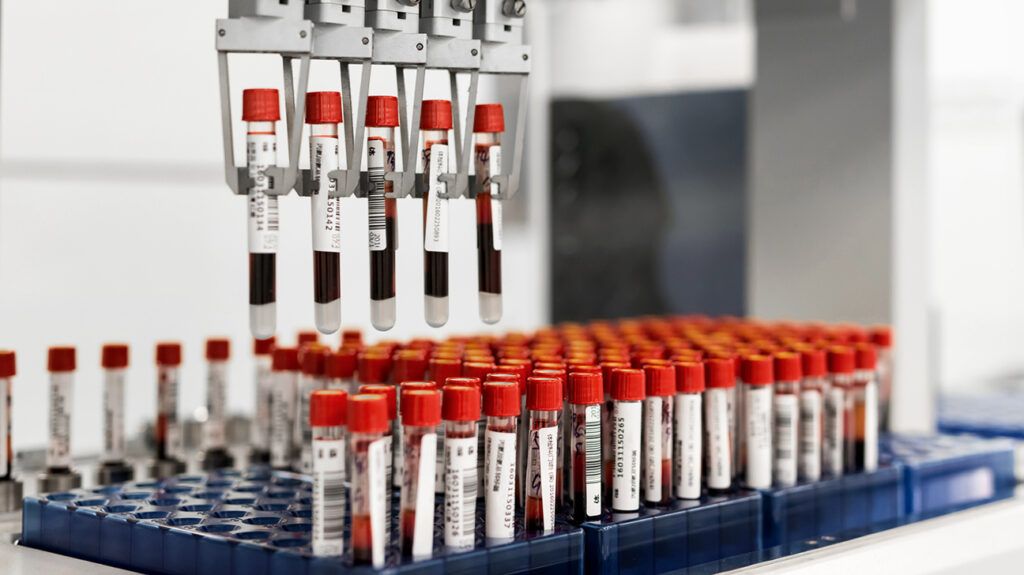Genetic testing for melanoma involves a healthcare professional taking a tissue sample from a person and analyzing it for specific gene mutations and genetic changes.
Melanoma is a type of skin cancer that may grow and spread more quickly than other forms of skin cancer. It starts when melanocytes, or pigment-producing cells in the skin, begin to grow uncontrollably.
Risk factors for developing melanoma include using tanning beds or spending a lot of time in the sun without wearing sunscreen. This is because sunshine and tanning beds are sources of ultraviolet (UV) radiation, which damages the skin cells over time.
This article discusses who may need genetic testing, what it involves, and what the results mean. The article also explores treatment and prevention for melanoma.
Skin cancer resources
Visit our dedicated hub for more research-backed information and in-depth resources on skin cancer.

Some families have a higher rate of melanoma than others. This is because they may have inherited a specific genetic mutation that increases the risk of uncontrolled cell division in skin cells. An example of a gene associated with melanoma that carries such a mutation is the CDKN2A gene, or p16.
Before getting any genetic test, it is important to receive genetic counseling. This can help prepare a person to receive their test results, whatever they may be. Moreover, a genetic counselor may be able to help with next steps, if the result is not what a person hoped for.
However, the
This is because many of the factors associated with gene mutations related to melanoma are already known to be risk factors for developing the condition. These risk factors include:
- having a family member who has experienced more than one melanoma
- having several members on one side of the family who have experienced melanoma
- having a family member who has had both pancreatic cancer and melanoma
- experiencing two or more unusual-looking moles, or Spitz nevi
- experiencing three or more melanomas, particularly if the first one appeared
before the age of 45 years
The ACS highlights that experts do not recommend genetic testing for everyone with a family or personal history of melanoma.
Additionally, most people develop melanoma from spending too much time in the sun without sunscreen and taking other measures to protect the skin.
In fact, according to the American Academy of Dermatology Association (AAD), if a person experiences blistering sunburn at least five times between the ages of 15 and 20 years, their risk of melanoma increases by 80%.
People may receive genetic testing to analyze any tumors they have or work out their risk of developing melanoma.
Genetic testing for tumors or masses
A doctor may screen a tissue sample from a tumor to look for any genetic changes within cancer cells. This
The presence or absence of genetic changes can help a doctor determine
These tests are different from those that check for inherited cancer risk. Healthcare professionals may also refer to this as biomarker testing.
Genetic testing for cancer risk
If a person has a family history of cancer, or more specifically melanoma, they may wish to know if their genetics could increase their risk.
Usually, the first step is information gathering, where a doctor or genetic counselor researches a person’s family medical history. In addition to this, a person may also fill out questionnaires and take part in interviews. The counselor will outline any next steps and offer advice on how to proceed, regardless of the test outcome.
When collecting a sample, most lab tests use blood, cheek cells, or saliva. Occasionally, the lab may want another sample from a specific tissue. A person can typically expect results between
The ACS advises that genetic testing is
If a person has received a
Alternatively, if the test is negative, it can help alleviate any health anxiety around an inherited risk of melanoma.
That said, if a test is negative, it does not mean a person should stop applying sunscreen and keeping their skin protected from UV radiation with other methods. According to the AAD, more than 90% of people who receive a melanoma diagnosis do not have a genetic mutation that increases their risk.
Doctors
- surgery, to remove the tumor and possibly some surrounding tissues
- immunotherapy
- targeted therapy
- chemotherapy
- radiation therapy
Read more about skin cancer treatment.
The
People can do this by:
- using sunscreen
- wearing protective clothing, such as a hat, sunglasses, and a long-sleeved shirt
- staying in the shade on sunny days
- avoiding sunlamps and tanning beds
Melanoma genetic testing can provide people with answers if they suspect they have a genetic mutation that increases their melanoma risk.
However, experts do not recommend genetic testing for everyone, and most people who develop melanoma do not have a genetic mutation that increases their likelihood of developing the condition.
To help reduce their risk of melanoma, people can take care of their skin by wearing sunscreen, wearing protective clothing, and staying in the shade.
It is best to speak with a doctor if a person experiences any symptoms of melanoma or wishes to know more about their risk of developing it.
